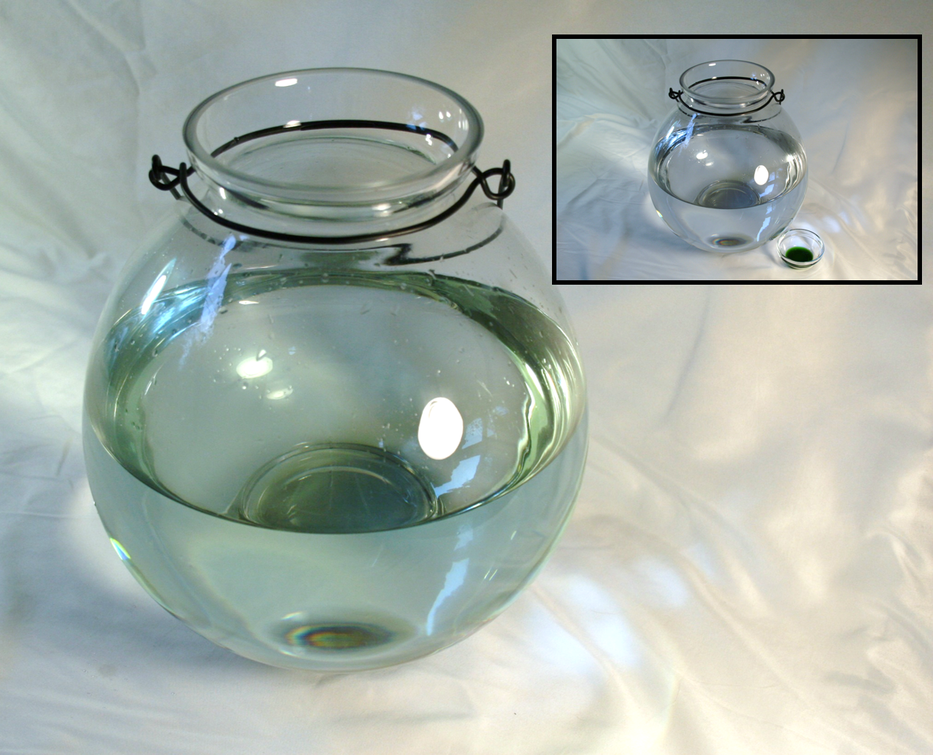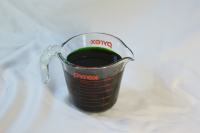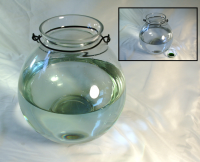In my last column, I took a refreshing step out of the weeds of the specifics behind cannabis analyses and took a broader, less technical look at the cannabis industry. I had envisioned The Nerd Perspective being filled with profound insights that I have had in the cannabis industry, but I have realized that if I restricted this column to insights most would consider profound…well…there would not be many articles. So in this article, I want to share an insight with you, but not one that is earth shattering. Instead, I want to talk about a simple concept in a way that might help you think a little differently about the results your lab generates, the results you have to pay for or even the results printed on a cannabis product you might purchase.
This article is all about the simple concept of concentration – the expression of how much of something there is in relation to something else. We use expressions of concentration all the time – calories per serving, percent alcohol in beer, even poll results in the presidential election circus. Cannabis is not excluded from our flippant use of concentration terms – percent cannabinoid content, parts-per-million (ppm) residual solvents, and parts-per-billion (ppb) pesticides. Most of us know the definition of percent, ppm, and ppb, and we use these terms all the time when discussing cannabis analytical methods. During my career in analytical chemistry, it has occurred to me that parts per billion is a really infinitesimal amount…I know that intellectually, but I have never tried to actually visualize it. So being the nerd that I am, I went about comparing these often-used concentration terms visually in my kitchen.
I started by preparing a 1% solution of food coloring paste in water. This was accomplished by weighing out 5g of the food coloring and dissolving it into 500mL of water (about one teaspoon into a pint). The resulting solution was so dark it was almost black:
The picture above expresses the low end of what we care about in terms of cannabinoid concentration and a pretty normal value for a high-concentration terpene in cannabis.
I then took one teaspoon of that mixture and dissolved it into 1.32 gallons of water (5mL into 5000mL), resulting in a 10ppm solution of green food coloring in water:
I did not expect the resulting solution to be so light colored given the almost-black starting solution, but I did dilute the solution one thousand times. To put this into perspective, 10ppm is well above many state regulatory levels for benzene in a cannabis concentrate.
I then took one teaspoon of the almost-colorless 10ppm solution and dissolved that into another 1.32 gallons of water, resulting in a very boring-looking 10ppb solution of green food coloring in water:
Obviously, since I diluted the almost-colorless 10ppm solution a thousand times, the green food coloring cannot be seen in the picture above. As a reference, 10ppb is on the low end of some regulations for pesticides in food matrices, including – possibly – cannabis. I know the above picture is not really very compelling, so let’s think in terms of mass. The picture above shows eleven pounds of water. That eleven pounds of water contains 50 micrograms of food coloring…the weight of a single grain of sand.
To expand on the mass idea, let’s take a look at the total mass of cannabis sold legally in Colorado in 2015 – all 251,469 pounds of it. To express just how staggeringly small the figure of 10ppb is, if we assume that all of that cannabis was contaminated with 10ppb of abamectin, the total mass of abamectin in that huge amount of cannabis would be just 1.143g – less than half the mass of a penny.
To me, that is an extremely compelling picture. The fact is there are instruments available that can measure such infinitesimal concentrations. What’s more, these tiny concentrations can be measured in the presence of relatively massive amounts of other compounds – cannabinoids, terpenes, sugars, fats – that are always present in any given cannabis sample. The point I’d like to make is that the accurate measurement of trace amounts of cannabis contaminants including pesticides and residual solvents is an astounding feat that borders on magical. This feat is not magic though. It requires extremely delicate instrumentation, ultra-pure reagents, expert analysts, and labor-intensive sample preparation. It is far from trivial, and unlike magic, requires a large investment on the part of the laboratories performing this feat of science. Other industries have embraced this reality, and the cannabis industry is well on its way toward that end…hopefully this article will help put the job of the cannabis analytical lab into perspective.







This is a nice, simple but elegant demonstration that appears reassuring until one contemplates that even in a “legal market” in Washington State, recent investigation has demonstrated that 85% of cannabis concentrate and flower samples tested in a state-certified lab were contaminated with pesticides, many grossly so, with concentrations of various bad actors in the tens to hundreds of thousands of parts per billion (article available free here for download as PDF or other format):
http://journal.frontiersin.org/article/10.3389/fphar.2016.00309/full
I’m not sure what those concentrations would look like in the dye-dilution model, but it is clear that the industry and regulators both need to do a far better job at protecting the public health. It also highlights why precision lab testing of this level of sophistication is absolutely necessary.
Thanks for the great explanation. Visualizing ppb was a bit beyond me, but this made it far clearer. I’ve been sending products off to be tested without a fully understanding the process, so learning more about is interesting.
Hi Jill,
Hooray! That was exactly the purpose of this article, and for The Nerd Perspective overall! It’s a ton of fun to write, and I’m glad you enjoyed reading the article. If you have any other questions please feel free to contact me directly.
Amanda Rigdon
Hi Ethan,
Thank you so much for reading the article! I share your concern regarding gross contamination of so-called ‘clean’ samples. In fact, that is one of the reasons I decided to write this article; the young cannabis industry – including labs, regulators, and consumers – still cannot grasp the massive instrument and personnel capital required to reliably test consumer products for the low levels of pesticides that – if present – can present valid health concerns. I chose the 10ppb level for my demonstration because in general, that’s a pretty low level for pesticide residues for food testing labs, and that’s close to where this industry needs to be. Is the cannabis industry there yet? My feeling is that the answer to that question is ‘no’. However, instead of taking a doom-and-gloom or holier-than-thou approach to this very serious issue, I’d like to take a more positive approach through education of laboratories, regulators, dispensaries, and consumers. The message of this article was to present in layman’s terms what a herculean feat ‘real’ trace residue testing is, and to point out that it cannot be done cheaply.
I’ve done a lot of thinking about this, and in my opinion, it all comes down to the question of “Who is going to pay for this testing?” The cannabis industry has adopted the food safety industry as a benchmark for many analyses – and for good reason. We are all comfortable demanding that the food we buy conforms to some minimum requirement for safety, but would we be making so much noise about food safety if we had to pay for all the testing required to ensure that safety? The glaring difference between food safety and cannabis is that government agencies foot a large portion of the bill for food safety testing, keeping costs reasonable for consumers and producers. Without deep federal pockets to pay for regulation, enforcement, and testing, our industry must take on that burden by itself.
It sounds daunting, but it’s doable. The forensic testing industry is largely funded and regulated on the state level and is often accredited by national bodies – just like the budding cannabis industry. I know the state of forensic testing isn’t the best and forensic labs are perennially underfunded, but the cannabis industry has something the forensic industry lacks: a high-value product generating billions of dollars of revenue. If the forensic testing industry has gotten to where it is now without selling a thing to anyone, the cannabis testing industry can take that model and really make it work like it should.
I know this reply was rather long and started exploring a tangent that wasn’t mentioned in your comment, but I feel that the issue of who’s footing the bill should be discussed earlier rather than later. If we as an industry work together, recognizing that certain costs are necessary for a safe product, I’m sure we can figure something out – we’re smart, passionate people!